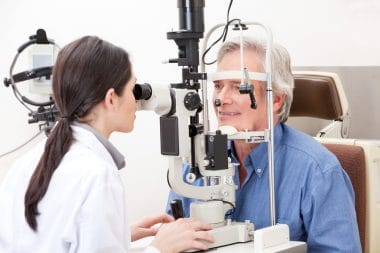There is a rare genetic eye disorder called Retinitis Pigmentosa. It is very rare with only affecting one out of every four thousand people who even carry the gene. It is a genetic disorder that is a degenerative eye disease that eventually can lead to the loss of sight. Parents pass this disorder down to their child, or can just pass the genes down to their child who would then become a carrier. This eye disorder is not curable, but doctors are doing research to try to further treatment options.
The retina is the back part of the eye that is the light sensitive tissue. The retina’s cells are called photoreceptors and they are what absorb the light. There are two different types of photoreceptors and they are called rods and cones. The rods are what make up your peripheral vision, and night vision. Where the cones are in charge of color and the details that you see. Retinitis Pigmentosa is when these cells in your retina start to die. The loss of these cells causes the inability to see overtime. Â
Retinitis Pigmentosa is a progressive disease. Symptoms usually start in childhood. If they do start in childhood then the majority of your vision may be lost by early adulthood. Causing a person with this disorder to be legally blind by the age of forty. The progression of the disease varies. Some people may experience symptoms sooner than others. Usually your rods die off first causing you to lose night vision, and your peripheral vision first. Then as the cones die you will experience loss of a visible field, meaning your area of sight you can see will start to decrease, like tunnel vision. You may also have trouble seeing color, or sensitivity to light. Retinitis Pigmentosa can end with most of your sight being gone as the disease develops. Since your sight is diminishing people will sometimes suffer from tripping over things or the inability to perform daily tasks safely like walking. When sight starts to diminish completely you may need to stop driving, and use a walking stick or seeing eye dog to help walking around in public places.
Your eye doctor will be able to run some tests to see if you suffer from Retinitis Pigmentosa. First your doctor will want your family history. Most likely if you have this genetic disorder someone in your family will have it as well. You can have genetic testing done to see if you have the genes for this disorder if you are unsure if a previous family member has had it. Just because your parents don’t show symptoms does not mean they couldn’t have been a carrier of the genetic disorder. Your doctor can perform an ERG (Electroretinogram). This is when your doctor will measure the electrical activity of the photoreceptors in your retina. Your doctor can also perform a visual fielding test. This is where he will have you look into a machine where you will look directly at a little black dot. Then little wavy lines will appear around the black dot testing your peripheral vision. When you see one of these wavy lines you are to click a button. This helps see how big your field of vision is. An ophthalmologist can also use an ophthalmoscope to look into the back of your eye at your retina. A retina that has Retinitis Pigmentosa will have dark spots on it. Â
There is no cure for Retinitis Pigmentosa. The goal for treatment is to slow down progression. So to help stop you from losing your sight too quickly. Your doctor may give you a medication called Acetazolamide, which will help decrease the swelling in your eye and improve your sight. Another medication that has shown promise in slowing down the yearly progression of Retinitis Pigmentosa is Vitamin A palmitate. Other things you may need to do is wear sunglasses a majority of the time. This will help with your light sensitivity if you suffer from that. There are retinal implants that some people can be good candidates for which will help bring back partial sight. Gene therapy can be done. As well as some people benefit from doing occupational therapy to help learn daily tasks when their sight starts to decrease. Â
Retinitis Pigmentosa is a very rare genetic disorder that at this point is not curable. With some treatment the symptoms can be suppressed and slow down the progression of the disorder. If you suffer from this disorder though you will lose most of your sight. Thankfully doctors are continually to work on ways to treat this to help keep vision as long as possible. Progression varies from person to person on this disorder, but if you know of someone in your family that has this you may want to have yourself checked over because you hold a high chance of having it yourself.Â
Retinitis Pigmentosa is a genetic eye disorder that can cause vision loss by the time you reach 40. #HealthStatus
Retinitis Pigmentosa is when the rod and cone cells in your retina start to die.
Sources:
https://www.nei.nih.gov/learn-about-eye-health/eye-conditions-and-diseases/retinitis-pigmentosa#:~:text=Retinitis%20pigmentosa%20(RP)%20is%20a,of%20side%20(peripheral)%20vision
https://www.webmd.com/eye-health/what-is-retinitis-pigmentosa#2








Reply